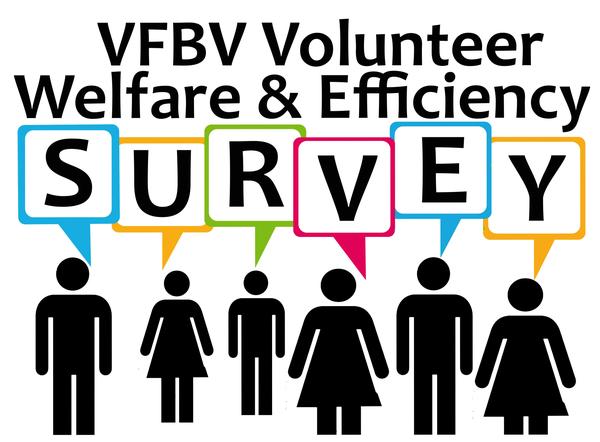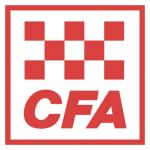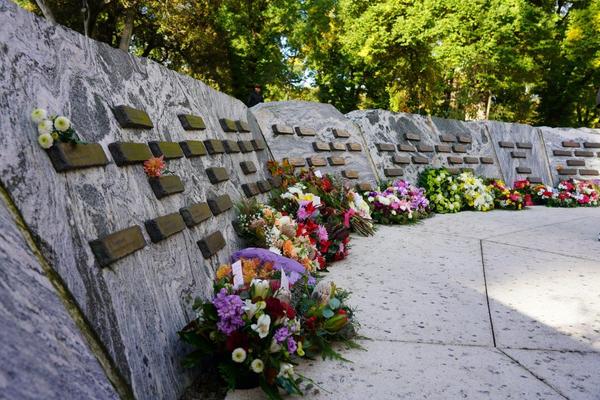As we head into the last leg of this year’s fire danger period, CFA budgets and fleet age continue to dominate discussions. In recent
weeks, the Victorian Government has announced an independent review of the Victorian Public Service to identify overlaps, inefficiencies, functions and programs that can be streamlined or eliminated.
I was instantly reminded of the British political
satire ‘Yes Minister’ revolving around cabinet minister Jim Hacker responsible for the fictional Department of Administrative Affairs. In one episode the Minister orders an economy drive to reduce government waste and slim down the civil service. The episode explores what lengths the civil service and the minister’s private secretary ‘Sir Humphrey Appleby’ will go to in order to stymie progress.
In one exchange Minister Hacker is particularly taken with an initiative and explains – “It is very popular with the voters, Humphrey. Gives them a chance to help us find ways to stop wasting government money.”
Sir Humphrey clearly exasperated exclaims – “The public doesn’t know anything about wasting government money. We’re the experts.”
Efficiency is not a vague concept to CFA volunteers. When the most valuable resource a person can
offer is at stake (their time) then ensuring that time is used wisely is one of the pillars of volunteer satisfaction. Given volunteers have not had an opportunity through the governments Emergency Services Organisation Finance Board discussions to provide its view, we’ll take this opportunity to remind members of several initiatives VFBV has identified that we believe would achieve significant efficiencies and see precious funding freed up to enable government to redirect precious funding to
CFA programs and the communities we protect all without extra tax hikes on our communities.
EMV (Emergency Management Victoria) remains an organisation of concern and classified as such by the VFBV Board following its disgraceful abandonment and disbanding of the sectors only
Volunteer Consultative Forum (VCF) back in April 2023. The VCF was formed in 2013 and was heralded as delivering on the Victorian Government’s commitment to consult emergency management volunteers across the sector. The forum was designed to provide a multiagency volunteer feedback loop direct to the Minister for Emergency Services on issues affecting EM volunteers. It was made up of more than twenty emergency management volunteers and agency nominees drawn from CFA, SES, Life Saving Victoria,
Australian Red Cross, Ambulance Victoria, VFBV, St John Ambulance, Volunteer Coast Guard, Salvation Army, VICSESVA and the Victorian Council of Churches Emergencies Ministry.
It was unceremoniously dumped in April 2023. As we reported back in 2023, we took no comfort from
Commissioner Crisp’s protestations that EMV would conduct some future review and consider future arrangements further. Two years later, and ironically two Commissioner’s later also - and surprise surprise - nothing. It confirms what we said all along - this was simply a smokescreen to avoid honouring the Victorian Government’s commitments made under the Emergency Management Volunteer Statement and signed by Premier Andrews. A promise broken.
So, it is little wonder that EMV does not enjoy the support or confidence of volunteers, which is very sad given its origins.
Formed in July 2014, EMV began with a small, dedicated team of less than 12 people who had formed the Fire Services Commissioner’s Office, and then morphed into a bureaucracy of several hundred, with its own CEO, Commissioner, Deputy Commissioners, countless executive directors, public servants, consultants and advisors overseeing an army of bureaucrats.
Given EMV’s operating budget remains hidden but drawing from the fact that government withheld $67.3 million last year from the CFA budget alone - we suggest EMV be disbanded and replaced with the office of the Emergency Management Commissioner, with a small staff of five or 10. A model similar to IGEM and the Fire Services Implementation Monitor’s office, but with full budget and statutory
transparency.
We continue to call for a full accounting of the $67.3M of grants being withheld by the Department each year to justify government spokespersons recent assertions that this is all for frontline equipment that “directly” supports volunteers and simply gets paid for by
other government bodies.
Which takes us to the $36.2 million set aside for the State Control Centre workforce in the 2022/23 Budget, and the $8.3 million annual cost set aside for future years to simply replace the previous workforce contributed by each of the agencies through
existing agency staffing and volunteer surge capacity. A surge capacity that continues to be undermined and neglected with a continued lack of any real action to address consecutive drops in endorsed level 3 incident personnel across the sector. Which gets us to the Community Safety and Building Authority, an entity created in 2019 to take over all CFA, FRV, SES and LSV station builds and upgrades.
Notwithstanding FRV is yet to transfer a single project – the CSBA was promised to deliver stations faster, cheaper and more efficiently. Volunteers on the frontline awaiting many of these projects report the complete opposite. Supposedly managing more than $2.1 billion of infrastructure works, their last public progress report posted to their department website is dated
June 2023.
And given the Department of Justice and Community Safety reduced its Budget Paper 3 output targets for emergency service volunteers back in the 2022/23 Budget by 1,000 volunteers and missed its target for operational volunteers in CFA and SES by almost 7,500 people this
year alone – then just like volunteers who are expected to do more with less, they shouldn’t mind making do with less either.
And finally, as we briefed members on back in December, The Fire Services Implementation Monitor the Hon. Nial Blair has revealed that each week Fire Rescue
Victoria (FRV) fails to fill between 17 – 33 seconded positions to CFA, accounting for up to 20% of CFA’s paid operation workforce remaining vacant every week.
VFBV is calling for the $71.6 million that is allocated to FRV for CFA secondees to be transferred to CFA’s budget, and FRV
paid only for the positions they fill, with any savings to be directed to CFA’s capital budget to help replace ageing fire trucks. Given it is volunteers who suffer when these critically important positions of ACFOs, Commanders and instructors are not filled – it is only fair that volunteers should be compensated when FRV is unable to meet its contractual obligations to CFA.
Pause for a moment to go back and re-read some of the $$ amounts I have outlined above in what are just the low hanging fruit of government waste and spin and then think about the extra $10 million the Government recently announced for CFA’s fleet budget.
Now there are some who would like you to only hear a figure of $250M which they have on repeat at the moment. But when you look through the fine print you notice the $250M is based on $50M per year for the next five years split between CFA and SES. Of this $50M, only $10M is for CFA fleet, with $15M going to double VESEP which includes CFA, SES, LSV, Coastguard and marine search and rescue and which volunteers
co-contribute $1 for every $2 of grant monies. The remaining $25M is allocated to SES.
At the same time they have announced collecting an extra $610M in new taxes per year rising to an extra $765M per year from 2026 onwards for their new “Emergency Services and Volunteers Fund” that
will replace the Fire Services Property Levy. If we were to use the same five-year formulae the government is using to announce the $250M for volunteers, then this extra revenue equals $3.6 billion in extra revenue, of which the $250M only accounts as 7% for volunteer initiatives.
VFBV is continuing to educate the public on the serious state of the CFA truck fleet, with 743 CFA fire trucks over their maximum age limits. 230 of these are more than 31 years old with the oldest trucks now 35 years old having been built in 1990.
Let me put
that into perspective.
In 1990, vehicles had cassette players in them. There were no airbags, ABS, reversing cameras, or emission standards. In 1990, ‘Seinfeld’ had just finished airing its first season, ‘The Simpsons’ were half way through its first season and ‘Friends’ and ‘ER’
were still four years away. Phil Collins ‘Another Day in Paradise’, Sinéad O’Connor’s ‘Nothing Compares 2 U’, and Madonna’s ‘Vogue’ all hit number 1 in the charts. Julia Roberts stared in ‘Pretty Woman’, Demi Moore and Patrick Swayze in ‘Ghost’, and 10 year old Macaulay Culkin starred in the first ‘Home Alone’. Bob Hawke was the Australian Prime Minister, Sir John Major was Britain’s PM, and US President George H Bush (Snr) was in the White House.
To expect CFA to attract the next generation of younger volunteers, when our trucks are museum pieces is just not realistic and setting CFA up to fail in what is one of the most fire prone places in the world.
VFBV is calling for a $400 million urgent truck replacement program to start addressing CFA’s ageing fleet and to arrest the critical decline.
We continue to encourage members to invite their
local members of Parliament to come and visit one of the 870 single cab tankers still in the fleet in your local patch. Wait for a 40-degree day in the hot sun, or a cold, wet and miserable day in the middle of winter so they can experience the full immersive experience of how Victoria’s volunteer firefighters are supported by their government and expected to ride to emergencies on the back of a 35 year old fire truck.
Thank-you to all members who continue to help spread the word and call attention to what is Australia’s oldest emergency service fleet of fire trucks.
To advance the point made by Sir Humphrey Appleby - governments are most certainly the experts when it comes to wasting and spending other people’s money. In the lead up to this year’s State Budget, you need to make your local sitting government member aware of what you and your brigade expect from the hard earned taxpayer funds that are collected from your local community that is supposedly for their fire services. Ask them if they think it’s fair for less than 25 cents
of each dollar collected through the current Fire Service levy to actually go to supporting CFA and CFA volunteers. And if they raise the recent $250M announcement, you are now armed with the facts that even Sir Humphrey might struggle to justify, but alas - I suspect… where there’s a will, there’s a way.










